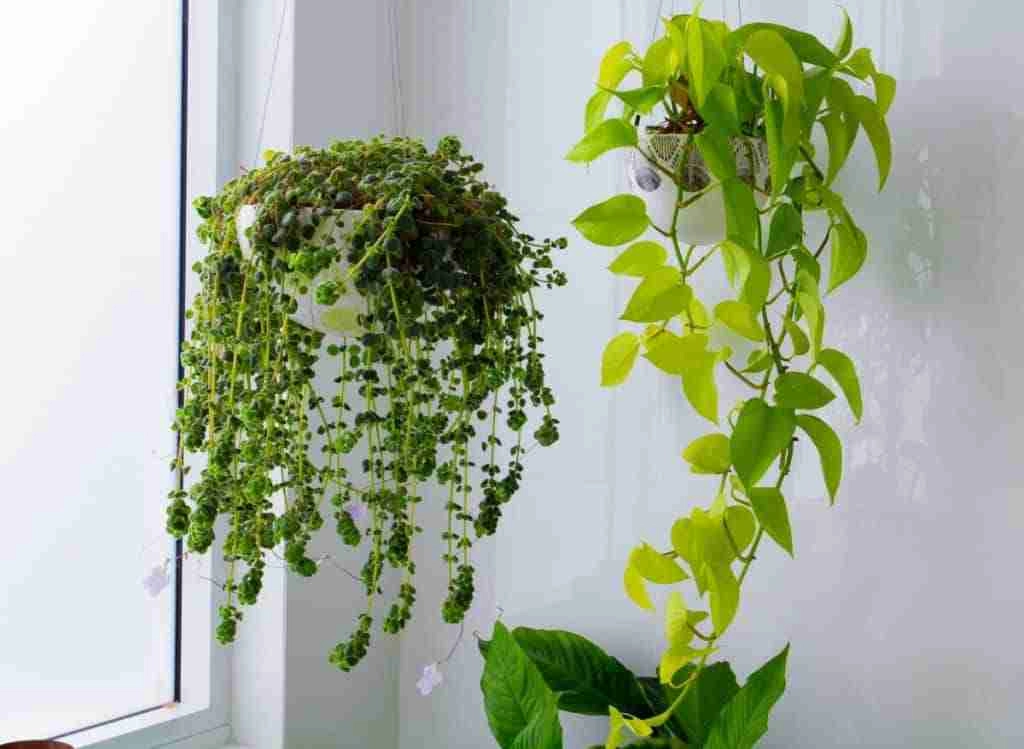
Are you looking for Indoor plant support ideas? Well, you are in good hands. Whether you want to fix a leaning houseplant, need support like a trellis or moss post for a climbing plant, or enjoy creative, stable support for your houseplants, this article is for you.
Indoor plants or houseplants have sound psychological effects on the body and help improve air quality, according to a study published in the Journal of Physiological Anthropology. These indoor plants provide tremendous benefits, but they need proper care and support in return.
Depending on your support equipment structure, you can shape the plant into a pyramid, an orb, or even a heart. Trellis, cage, wall, wire, and moss pole are excellent supports for climbing houseplants.
If you are an experienced gardener, you can always make your own with a bit of wire coated with plastic or non-rusting wire. No matter what you use, ensure you insert the supports for climbing plants into the pot at the time of planting.
Read on to discover the top indoor plant support ideas, the best indoor climbing plants, how to fix a leaning potted plant, when to support climbing houseplants, and tips for caring for climbing houseplants.
See also: 5 Succulent Christmas Ornament Ideas For Diy Enthusiasts!
9 Indoor Plant Support Ideas
There are many methods of indoor plant support. Wires, woods, and bamboo all make great and beautiful support for indoor plants. Any round or spindle shape trellis can support your climbing plants.
If you have enough gardening skills, you can make your own support with any materials you like. Let’s now explore the 9 different indoor plant support ideas.
1- Simple Straight Stake
It is the most common way to support a plant and is ideal for single-stemmed plants that are a little top-heavy.
For example, you can use simple straight stakes for flowering plants or those that have outgrown their stems quickly.
PRO TIP: Remember, when tying your plant off, be careful not to tie it too tight. It can cause injury as the plant grows, and the tie cuts into its stem. You can prevent this by using an elastic tie like nylon or special plant ties.
See also: Here’s How to Train Climbing Roses
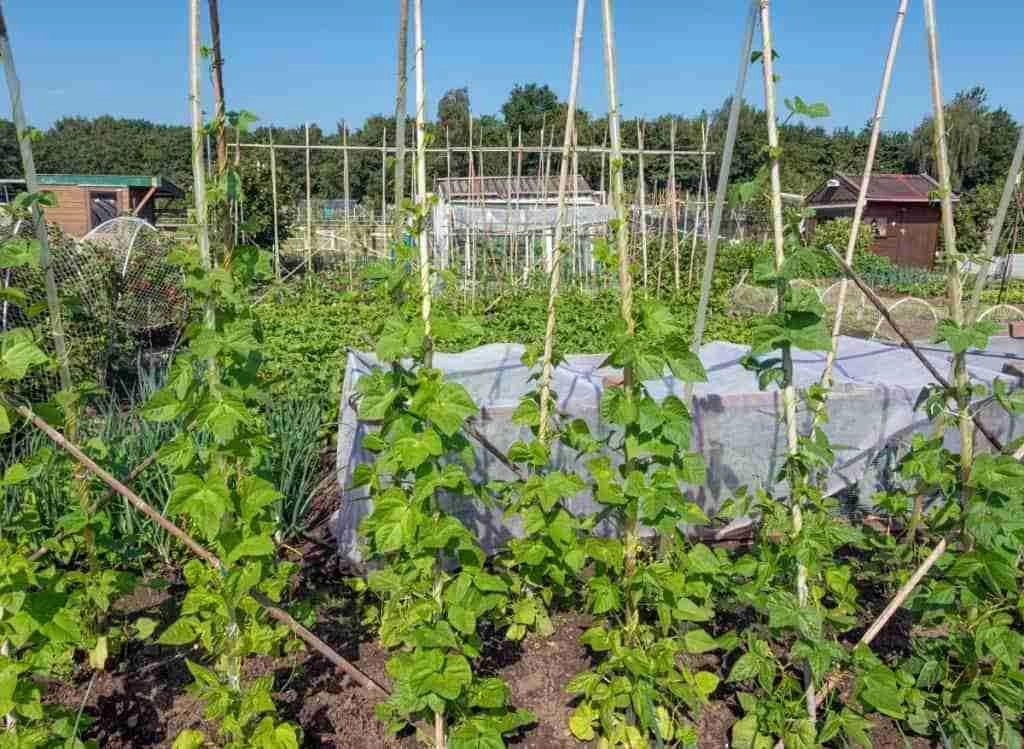
2- Support by Wire
Using wire to support your plants is perfect if you need to train your plants’ shape. A good example is jasmine, which grows with long branches that flower profusely but cannot support their weight.
Wires can serve as indoor plant support. Support climbers by fixing flat wires, 45cm separated, to your fence. Space the plant eyes 1.8m separated on a level plane; at that point, run wire through them. Secure the closures by circling through the eye and folding over the shank.
You can fix the wire utilizing a couple of forceps to turn the finish of the plant eye; on the off chance that the climber can’t grasp without anyone else, tie its stems into the wires, keeping the twine free to consider development. Include both ends into the soil and loosely tie the plant to the wire support as it grows. It has the extra benefit of creating lovely and sculptural hoop-shaped support.
3- Support by Moss Pole
Moss Pole’s support is the most complex kind of support and is best for climbers who need support to grip.
You can make your climbing pole by filling a narrow wire tube with damp sphagnum moss and tying the plant to the pole till it latches on by itself.
Special climbing polls made from fern bark or moss are designed for climbing plants on Amazon, some garden centers, and specialty craft stores.
PRO TIP: Keep in mind that it will take extra moisture to keep the pole moist and encourage the plant to latch onto the stake, especially true for poles that use sphagnum moss, which dries out quickly.
4- Support by Bamboo Teepee
Support by bamboo teepee is the most helpful structure for growing more in less space. Bamboo is long-lasting, flexible, attractive, and multi-purpose, takes up minimal space, and it is lightweight.
Tepees are conical trellises used in the garden to support climbing crops such as squash, beans, cucumbers, and peas.
You can also use teepee structures in the vegetable garden because it is economical to support these climbers.
See also: How to Grow Plant – A Quick Guide Before you Get Into Gardening
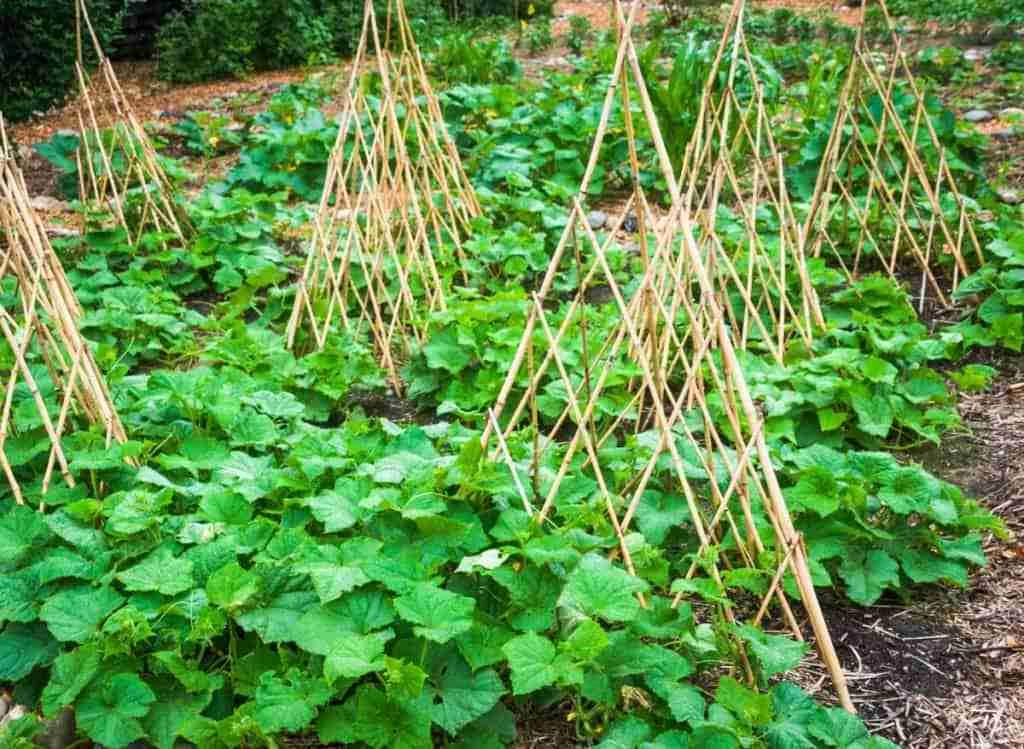
5- Support By Wood Plank
For support with a wood plank, insert the wood plank at the time of repotting so that you can effortlessly place the rough wood plank at the bottom of the container and put your plant and soil in at the same time.
Make sure you take your vines and tie them up securely against the wooden planks. You can use stretch tie tape plant ribbon because it works specifically for this.
With time your plants will mature, and their roots will hold onto the wood plank and attach themselves, and you will start to notice the leaves get bigger and bigger.
6- Support by Trellis
If you have a bushier houseplant, a trellis is an excellent idea for support.
A wide assortment of stakes and trellises exist. You’ll see them produced using different materials, including bamboo, wood, metal, wire, and plastic, and they come in numerous sizes, styles, hues, and shapes. With the help of twigs and branches, you can make your own stakes. On the off chance that you wish to shape them, do so when they are green.
Trellis-like sweet peas, decorative gourds, clematis, Nasturtium, etc., can support many plants. Since these plants are deep-rooted, they need firm support in the soil. Once they start growing, they need strong support; otherwise, they will become weak and feeble.
You can also add some nitrogen fertilizers in about four to six weeks. As a result, you will get sound and healthy growth along the trellis.
When you expect substantial plant growth, it is the best time to cut the extra stems so that new stems get enough space for their growth. This will encourage new flowers to blossom.
See also: Here’s How to Start a Garden From Scratch
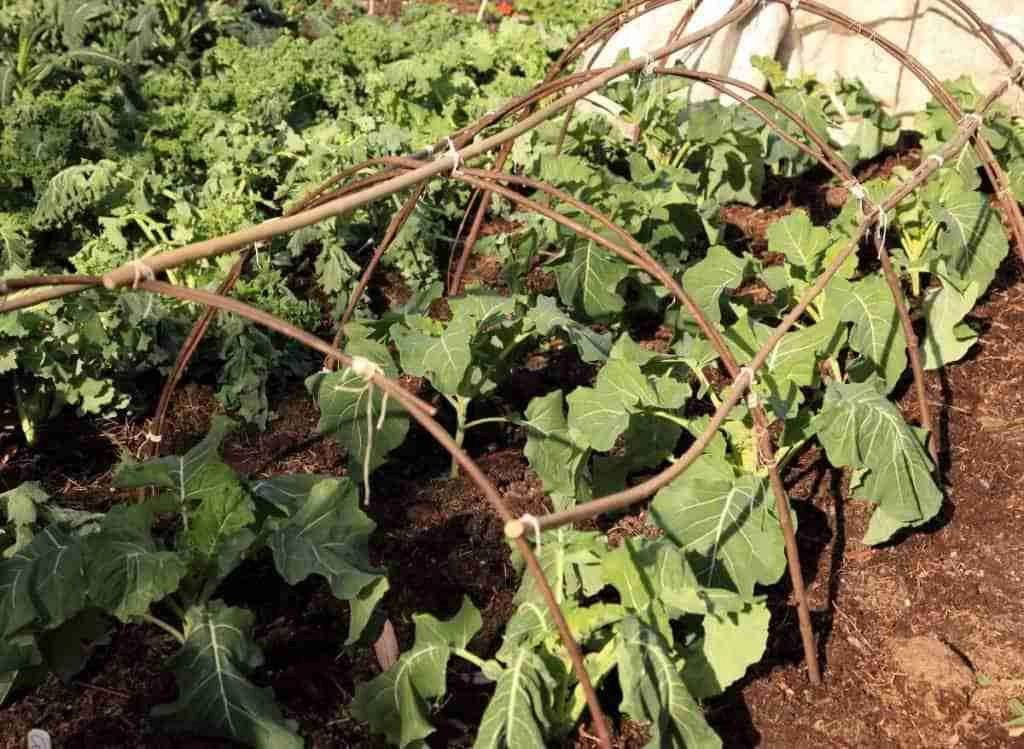
7- Support by Cage
Cage support is ideal for multi-stemmed plants that are top-heavy with blooms or foliage but cannot support themselves. You can use cage support in different ways.
You can use a single wire cage that circles the plant or numerous sticks with twine strung between them to form a support system. In these cases, it’s often unnecessary to tie the plant to the support itself because the cage will support its weight. Preferably, ensure the plant has room to spread out within the cage.
8- Support by Wall
Climbing plants’ support along the wall requires careful training and handling. If you trained your climbing plants carefully and pruned them in time, they will grow healthily and attractively. And will be easily maintained in the future. The support should be prior to the planting.
To permit plants to develop unreservedly against separation and wall, fix your support about 5cm (2in) away from the divider or fence surface. There must be a 45 cm gap between the plants and the wall. The plant is planted at the base of the wall, so it has room for its roots’ development and rain capturing.
Remove all the ties, but leave them with cane support. You can select only 2-3 bamboo canes or wires for your plants’ support along the wall. Then tie your bamboo with the wire along the wall. This will result in proper and clean climbing plant support along the wall on the bamboo sticks.
9- Support by Hooks and Nails
Urge a plant to move over a divider by introducing deliberately positioned nails or hooks onto which you secure the plant. Plants that do well with such preparation are pothos, hoya, English ivy, and sharpened stone plants.
Certain plants, for example, orchids and split-leaf philodendrons, have what is known as aeronautical roots. These are roots that develop from the base of the plant and, in the wild, retain dampness and supplements.
In the home condition, it’s ideal for preparing these airborne roots to grow up in greenery secured post, which you can make or purchase at the nursery or home and nursery focus. When utilizing a greenery-secured shaft, keep it wet by clouding the post daily with water.
Now, let’s discuss the best indoor climbing plants to get you started
Best Indoor Climbing Plants
Indoor climbing plants like ivy and pothos are excellent for decorating your home. They are a way to add whimsy and complete your space; place them on shelves and let them do their tricks.
Here are the top 6 indoor climbing plants to add to your space.
1- English Ivy
Ivy has spade-shaped leaves and is quick to grow. English Ivy likes moist soil; however, not too warm for the temperatures. Even though Ivy can handle less light, keep in mind that the color of the leaves will change with time.
They also help purify their surrounding space by eliminating benzene and formaldehyde from the air, and besides, they are non-toxic.
English Ivies are low-maintenance plants and tolerant to low light conditions. They are perfect if you are a newbie or have a busy lifestyle.
See also: 13 House Plants Benefits you Need to Know
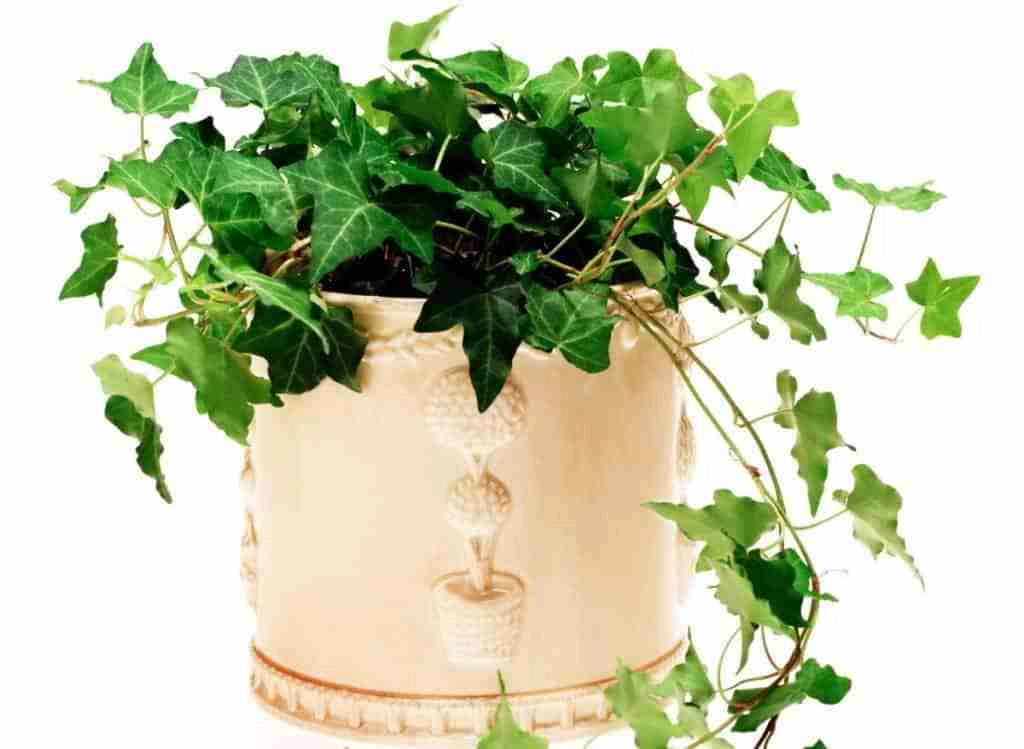
2- Pothos
Pothos is also low-maintenance indoor trailing and climbing plants; they are effortless to care for and adaptable.
The heart-shaped leaves of Pothos grow with stems that never appear to end. It is also hardy to 30 degrees Fahrenheit. They thrive in high humidity however do well in dry environments and do not like direct sunlight.
Don’t forget to let the soil dry well in between waterings. Plants will signal you when they need water by dropping their leaves. It is sometimes better to underwater than overwater these plants.
PRO TIP: When Pothos starts to dry out, give it indirect light and water only. Don’t forget to trim your houseplant for a bushy shape because it can lose that entire look once it sends out long stems.
See also: How To Deal With Too Much Iron In Your Garden’s Soil: A Guide
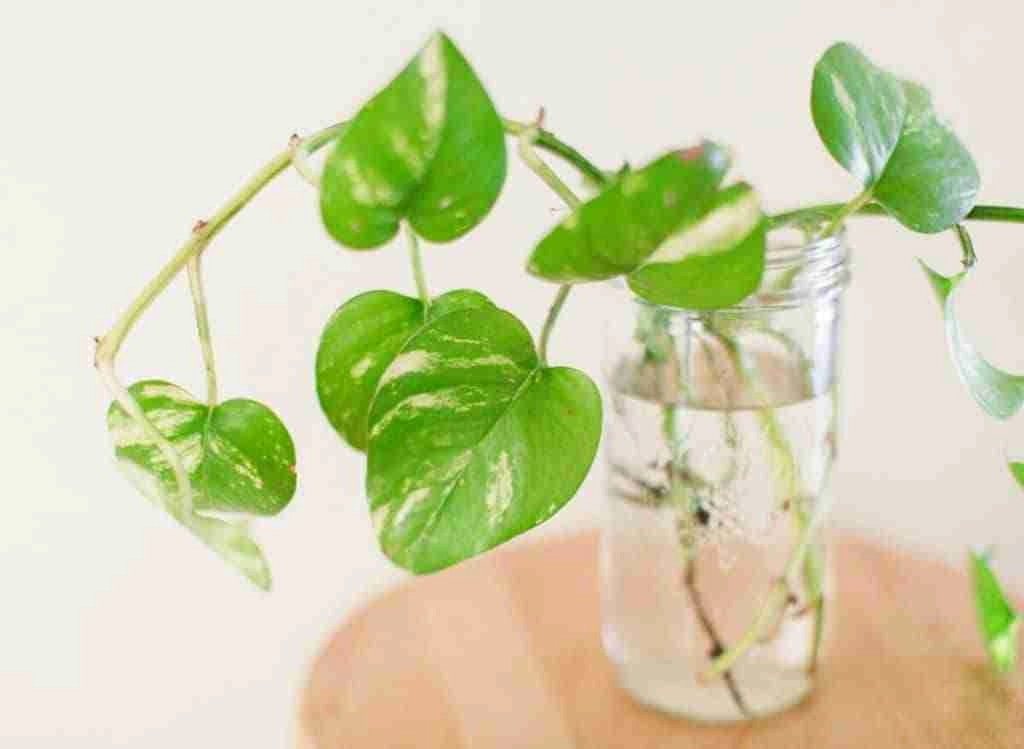
3- Creeping Fig
The solution to a healthy creeping fig plant is to provide as much warm, humid air as possible, lots of even moisture, and bright (but not direct) sunlight.
PRO TIP: If you plan to keep your creeping fig plant around for longer than its natural indoor life, propagate the plant every other year or so.
See also: How To Repot Overgrown Succulents Like A Pro: A Quick Guide
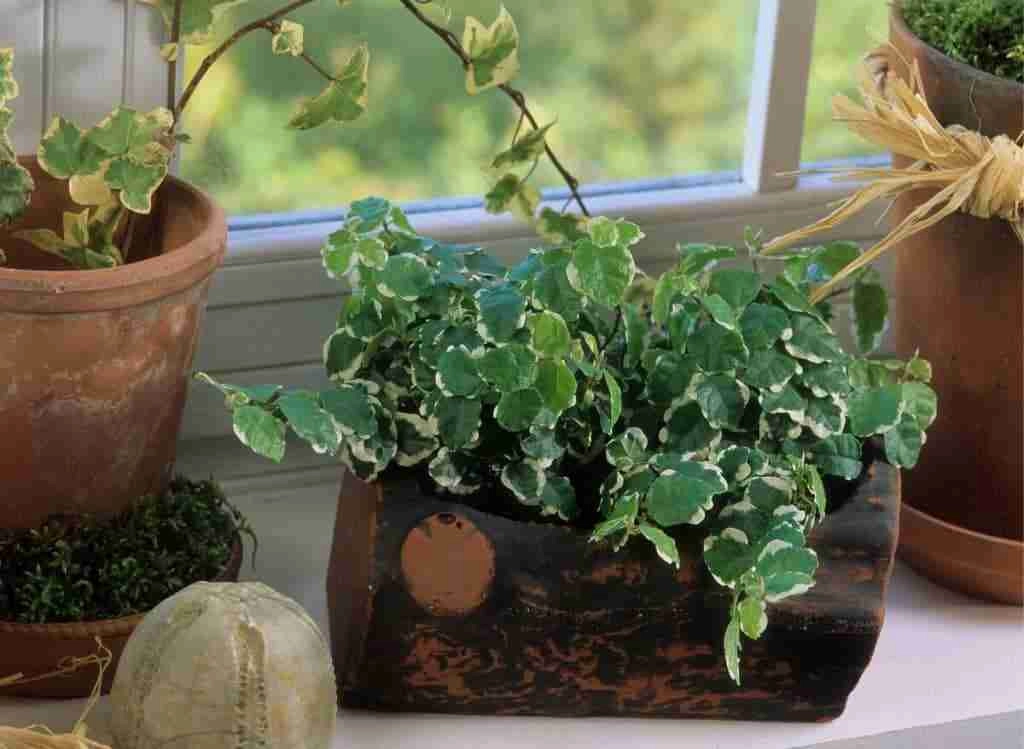
4- Philodendrons
Philodendrons are easy indoor trailing and climbing plants that offer something for everyone. If you’re looking for an easy-to-care-for houseplant, odds are one of its almost 500 species will suit you.
The name philodendrons come from Greek, a combination of “love” (Philo) and “tree” (dendron). They grow fast and adapt to light conditions, from the indirect sun to medium and even low light environments.
Philodendrons are excellent air-purifying plants that help remove formaldehyde from the air and are a good-natured and leafy addition to a home.
See also: How to Lower Manganese Levels In Soil
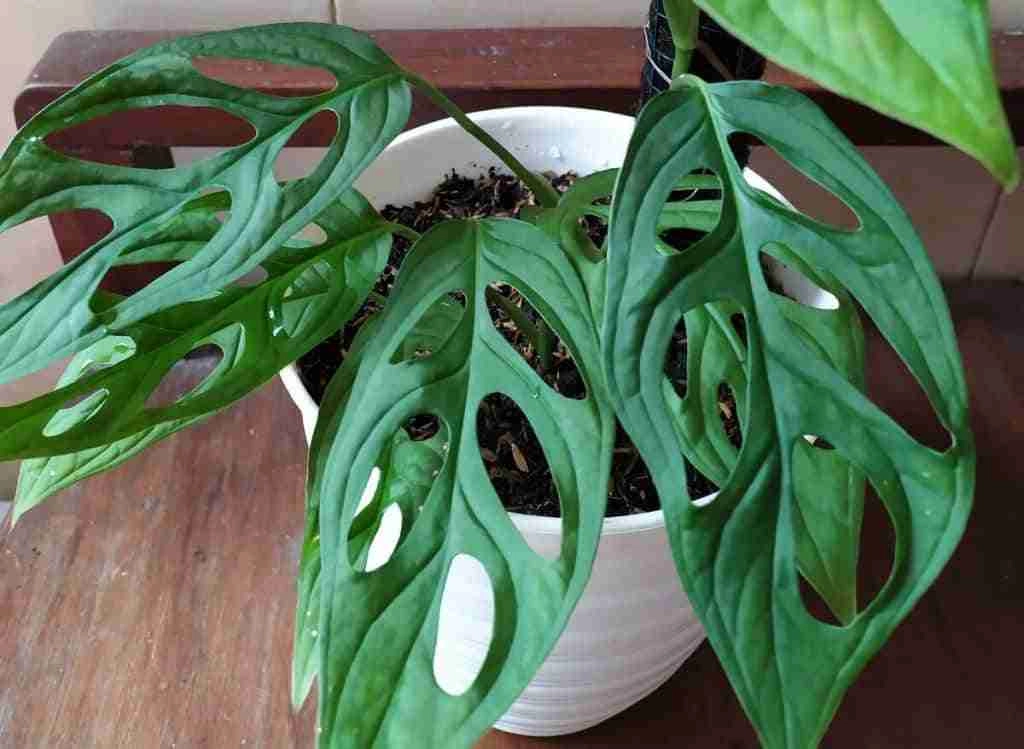
5- Vitaceae
Vitaceae (the grape family) consists of ca. 950 species and 16 genera primarily spread in tropical areas.
Vitaceae is well‐known for grapes’ economic importance and dominant climbers in tropical and temperate forests.
See also: How to Successfully Propagate Haworthia Succulents
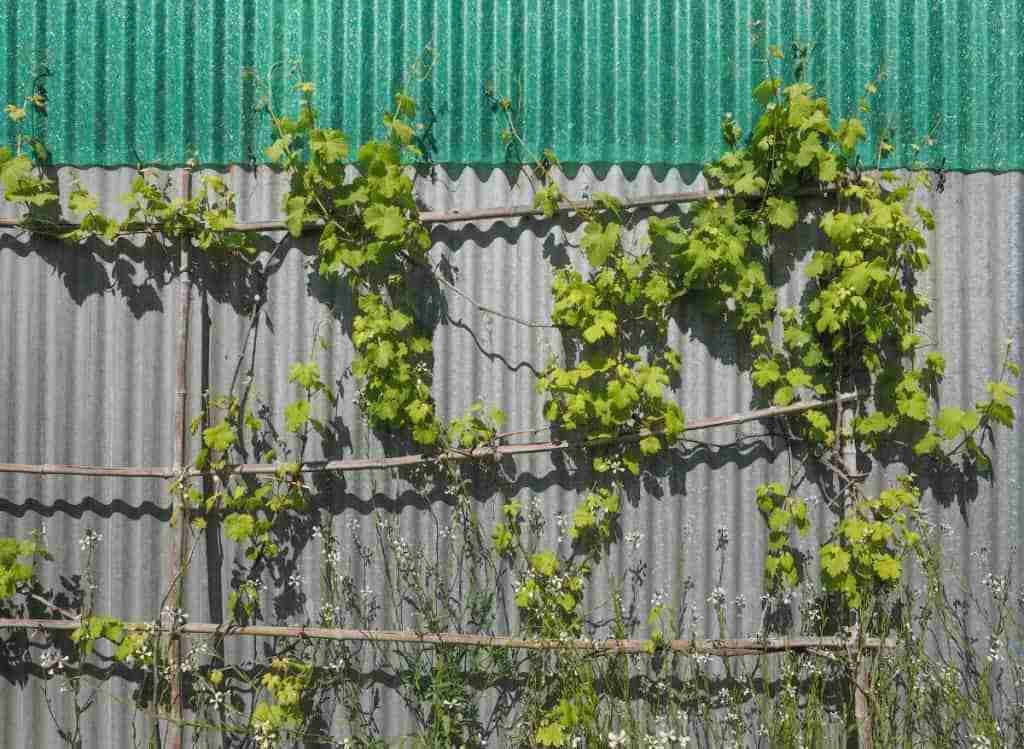
6- Swiss Cheese Plant
The Swiss cheese plant receives its name from its large heart-shaped leaves that form holes as the plant ages (described as “fenestration”), causing its leaves to resemble Swiss cheese. They can become huge-scale plants and may need ample space to be displayed.
Usually, they trail either from a higher shelf or plant stand, climb on a moss/coir pole, or other support types. They also grow relatively fast, making them easy plants to trim and propagate.
PRO TIP: Swiss Cheese plants enjoy moderate to indirect bright light. Remember that too much light and direct sun will yellow their beautiful leaves. Water your swiss cheese plants evenly and moderately.
See also: Here’s How to Germinate Tomato Seeds Faster: a Quick Guide
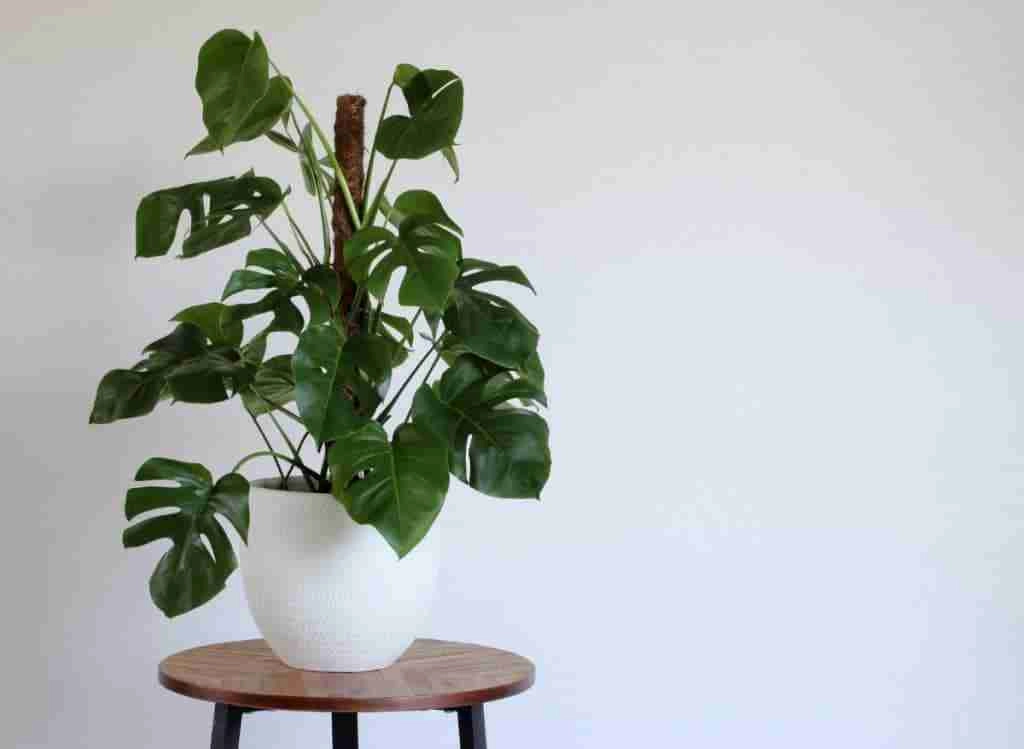
How to Fix a Leaning Potted Plant?
In their natural environments, plants face wind and competition from other plants, encouraging them to overgrow and develop sturdy support structures. However, indoors where there is rarely wind, plants often relinquish their support system and develop weak stems.
Rapid growth isn’t the only reason for fixing a leaning potted plant. Some plants are naturally unstable and require fixing leaning potted plants. At the same time, other plants are natural climbers and need to be supported to develop appropriately.
How you should support your plants depends on the type of plant you are growing. Here are some basic staking techniques that should work for most houseplants.
- Single stake: The most common plant-staking technique includes using a single stake.
- Trellis: If your plant horizontally expands as it grows upward, look into building a trellis for it to grow against. For example, pole beans grow along wood trellises and fences, as well as melons and zucchini.
- Ring-style support: You can use a metal ring to support plants that produce multiple stems. For example strawberries
- Tomato cage: Cages can support various plant species, not just tomatoes.
PRO TIPS: Whenever you are planting your climbing plants in a pot, make sure that the support has already been planted along with the plant so that when it grows, it has enough support for its climbing.
See also: 22 Disadvantages and Advantages of Hydroponics (What You Should Know)
When To Support Climbing Houseplants
No matter what type of support you use, it is best to place the support when your plant is relatively young and still actively searching for support.
PRO TIP: It is an excellent idea to position the plant support near one edge of the pot instead of placing the stake in its center. It will give the plant extra room to grow and make it easier to present it with a “good” side instead of allowing it to grow wild.
Eventually, some climbing plants will require occasional trimming. If your plants need pruning, trim them whenever required.
Tips for Caring for Climbing Houseplants
- Whenever the soil feels dry, water your climbing houseplants. Also, keep in mind that overwatering kills plants.
- Let the creepers cascade from shelves, across side tables, or in a sunny window. Alternatively, let creepers climb along with window and door frames, or you can train them to climb a chain.
- Use liquid fertilizer to feed your indoor plants once a month.
- Most climbing houseplants need a minimum of four hours of sunlight a day. Read the plant tag to determine your climbing houseplants’ needs. Each plant is different; experience and find the right amount of light for your plants.
- If your plant isn’t thriving, it may be time to repot. Check out this article on how to repot overgrown succulents like a pro: a quick guide.
Final Thoughts
These are a few indoor plant support ideas, and as you search what is available commercially in your area and find what works best for your situation, you may find even more choices for indoor plant support ideas.
Try these indoor plant support ideas to take care of your houseplants. The best place to plant your climbers is at your home, providing them with space and better nourishment to get a good yield.


